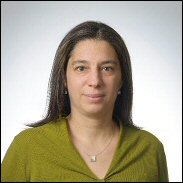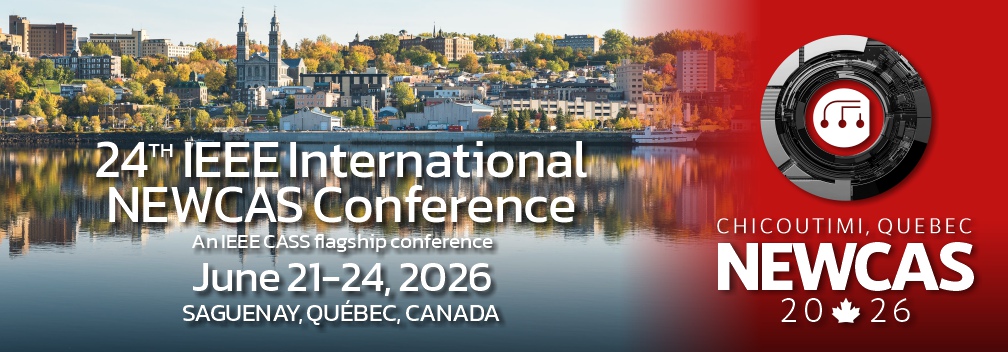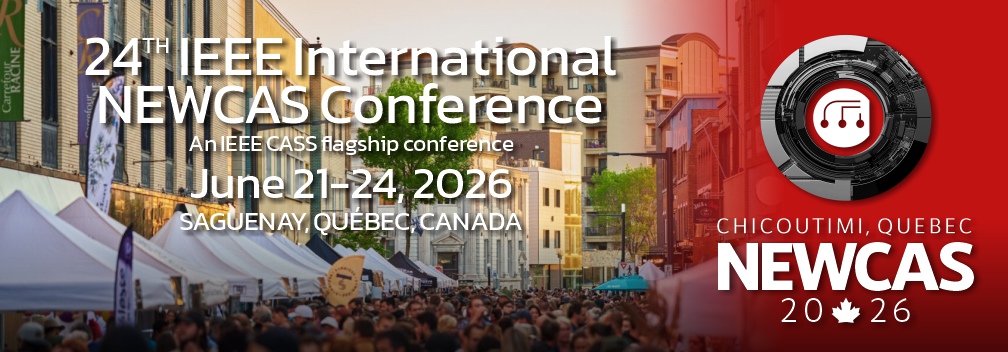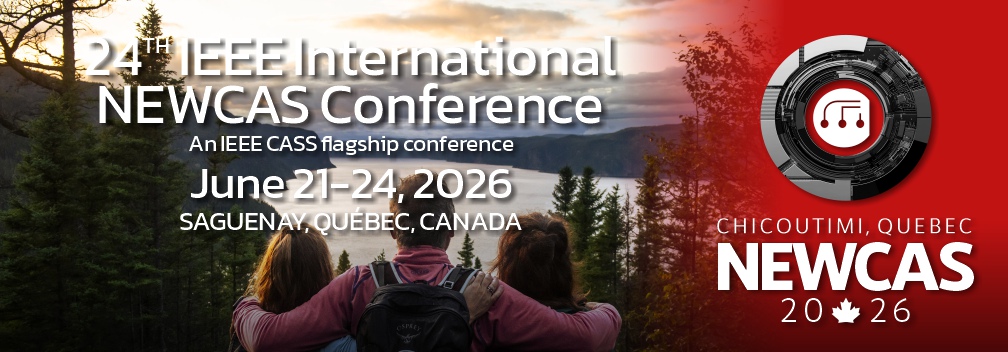Keynotes
What does it take to operate a quantum processor?
by Max Hofheinz, Université de Sherbrooke
Shaping the future : C2MI’s role in next generation technologies
by Marie-Josée Turgeon, C2MI
Analog neuromorphic computing and applications in artificial intelligence
by Pooya Ronagh, 1qbit
CMOS industrial devices for silicon-based quantum computation
by Eva Dupont Ferrier
What does it take to operate a quantum processor?
 Max Hofheinz
Max Hofheinz
Université de Sherbrooke
— Abstract — Superconducting quantum processors hold great promise for accelerating some hard computation problems such as integer factorization which can be performed exponentially faster than on a classical computer. In addition, quantum computation is reversible, meaning that gate operations on a quantum computer do not need to dissipate energy, at least in principle. However, operating a quantum computer requires a very substantial overhead in power consumption, classical computing power as well high-frequency electronics. This e classical electronics required for quantum computing is in many aspects similar to what is required for state-of-the art wireless telecommunication: In order to operate a quantum processor, highly accurate microwave control pulses need to be synthesized and sent to each quantum bit of the processor. Readout signals from each qubit, which are at the level of a few microwave photons, must then be amplified and digitized. In order to correct errors in the quantum processor, from these signals new control pulses must be computed with very low latency. At the same time, the quantum processor must be kept at milliKelvin temperatures despite the very large number of high-bandwidth connections between classical electronics and the quantum processor. While all of the components needed along this feedback loop are individually available, how to best scale them to a quantum computer of practically relevant size is still an open question. I this talk I will discuss the various engineering challenges along this signal path and possible solutions.
— Biography — Max Hofheinz holds master’s degrees in Engineering physics from Institut National Polytechnique de Grenoble, in Microelectronics from Université Grenoble Alpes and in Physics from Universität Karlsruhe. He performed his PhD at CEA Grenoble with Marc Sanquer from 2003 to 2006 on conventional field effect transistors which he operated at cryogenic temperatures to observe single electron effects and the spin of individual dopants in the transistor. He then switched focus from semiconducting to superconducting quantum devices. In his first postdoc in the superconducting quantum computing group of John Martinis and Andrew Cleland, which has now become the Google quantum hardware group, he demonstrated the first full control over the quantum state of a microwave cavities. During his postdoc with Fabien Portier and the Quantronics group at CEA Saclay from 2009 to 2011 he pioneered the field of Josephson photonics, a new class of superconducting quantum devices based on voltage-biased Josephson junctions. In this regime, the Josephson junction acts as a nonlinear drive, rather than a nonlinear inductance, allowing for DC-powered quantum devices. His current research, first as research engineer at CEA Grenoble from 2011 to 2018 and since 2018 as Associate professor at Université de Sherbooke, focuses on building useful quantum devices based on Josephson photonics, such as quantum-limited amplifiers and single photon detectors, which promise reducing the hardware overhead of quantum processors.
Shaping the future : C2MI’s role in next generation technologies
 Marie-Josée Turgeon
Marie-Josée Turgeon
C2MI
— Abstract — Turning ideas into financially profitable businesses is at the core of C2MI’s mission. Featuring a world-class infrastructure and a team of professionals drawn from academia and industry, the Centre is strongly committed to its role as a unique model of collaboration, where the synergy between industrial and academic partners is both necessary and essential to the delivery of next-generation products. C2MI is the link between proof of concept and market-ready products. Operating in the fields of microfabrication, packaging and printed electronics for digital technologies, C2MI’s role is transversal to every economic sector, crucial for wealth creation in both Quebec and Canada. Technologies are rapidly evolving and new market opportunities are opening up, enabling C2MI and its model to lead the way to the next chapter in the future of technologies, from advanced packaging and to quantum.
— Biography — Marie-Josée Turgeon holds a bachelor’s degree in chemical engineering from Université Laval and a MBA from Université de Sherbrooke. She has been involved in microelectronics for over 27 years. Most notably, she has worked for IBM in the field of semiconductor assembly, where she held several roles in R&D, production and finance. She then became plant manager for Varitron before joining C2MI in 2016. She was appointed CEO in April 2022. Marie-Josée also serves on the boards of Technum Québec, ISEQ and ICI (Collège Ahuntsic), and she is a member of the research ethics committee at Cégep de Granby (college).
Analog neuromorphic computing and applications in artificial intelligence
 Pooya Ronagh
Pooya Ronagh
1qbit
— Abstract — Neuromorphic computing is envisaged to alleviate the energy hunger of AI by enabling computing architectures that are closer to biological nervous systems compared to general-purpose von-Neumann machines. However, matrix-vector multiplication units are conventionally used in hybrid systems involving digital processors (e.g, FPGAs, and digital ASICs). Therefore, as state machines, neuromorphic devices still only process discrete states stored in a memory unit. In contrast, biological nervous systems are known to be much richer as they produce, communicate, and process continuous amplitude signals. In this talk, we introduce analog diffusion engines (ADE)—fully analog systems for solving stochastic differential equations. We discuss various possible realizations of ADEs as electronic, and photonic integrated circuits, and combinations of the two. We then summarize Irréversible’s roadmap in designing, manufacturing, and commercializing these systems.
— Biography — Dr. Pooya Ronagh is the Co-founder and CTO of Irréversible and the CTO of 1QBit. Additionally, he serves as a Research Assistant Professor at the Institute for Quantum Computing and the Department of Physics and Astronomy at the University of Waterloo, and a Research Scientist at the Perimeter Institute for Theoretical Physics. Pooya’s background is in computer science, mathematics, and quantum computation. He received his PhD in Mathematics after studying at the University of Pennsylvania and the University of British Columbia, and has more than a decade of industrial and academic R&D experience with unconventional computer architectures for optimization, artificial intelligence, and quantum information processing.
CMOS industrial devices for silicon-based quantum computation
 Eva Dupont Ferrier
Eva Dupont Ferrier
Universite de Sherbrooke
— Abstract — Silicon-based spin devices appear as a very promising route for quantum computation. The excellent intrinsic properties of the (purified) host material guarantee very long spin coherence times and electrical manipulation allows fast gate operation. The compatibility of silicon devices with the microelectronics industry fablines potentially grant advanced reliable standardized process with low variability of the spin-devices that can be integrated in a large scale platform with co-integration of on-chip control electronics. Up to now the practical implementation of a full integration of high quality quantum devices and control cryoelectronics on an industry-based platform remains challenging. In this talk I will review our recent advances on the development and measurements of silicon-based spin devices fabricated in an industrial 300mm fabline. State-of-the-art gate stack for devices reproducibility and low charge noise operation is established. I will present our results on devices operating in a single dot and double dot regime with integrated SETs for state readout, investigation of orbital effects probed by magnetospectroscopy and single shot spin readout performances. I will then show our recent advances in readout of these devices using radiofrequency reflectometry measurement with in-situ tuning at low temperature. This technique is of particular interest for the implementation of scalable devices as well as for fast and sensitive measurements. Last, I will show how these devices can be combined with other silicon devices for cryocontrol applications. I will review several geometries of devices (GAA, FinFET,…) investigated, with both n-type and p-type, and the evolution of their performances with temperature. In particular, I will review essential metrics of the device parameters at low temperature for integration as cryoelectronic component
— Biography — Eva Dupont-Ferrier is an associate Professor of Physics at USherbrooke. She is an expert in quantum systems with special interest in spin in semiconductor devices, superconducting circuits, hybrid spin-superconductor systems and cryoelectronics. She was awarded the Bloch prize for her work on topologically protected superconducting circuits, was co-recipient of the ICPS best paper award for her work on coupled-atoms-transistor and was awarded a Marie Sklodowska-Curie Individual Experienced Researcher Fellowship to build original hybrid quantum system combining spin and superconducting circuits, resulting in demonstration of high quality factor superconducting resonator resilient to magnetic field. She is involved in several EDI initiatives. Building on her expertise with microelectronics foundries, she leads since 2018 at USherbrooke & Institut quantique a research effort with IMEC to develop spin-based quantum architectures based on commercial micro-electronics technology. She also collaborates with STMicroelectronics on the development of ultimate transistors for quantum information processing as well as efficient devices designed for cryoelectronics.


